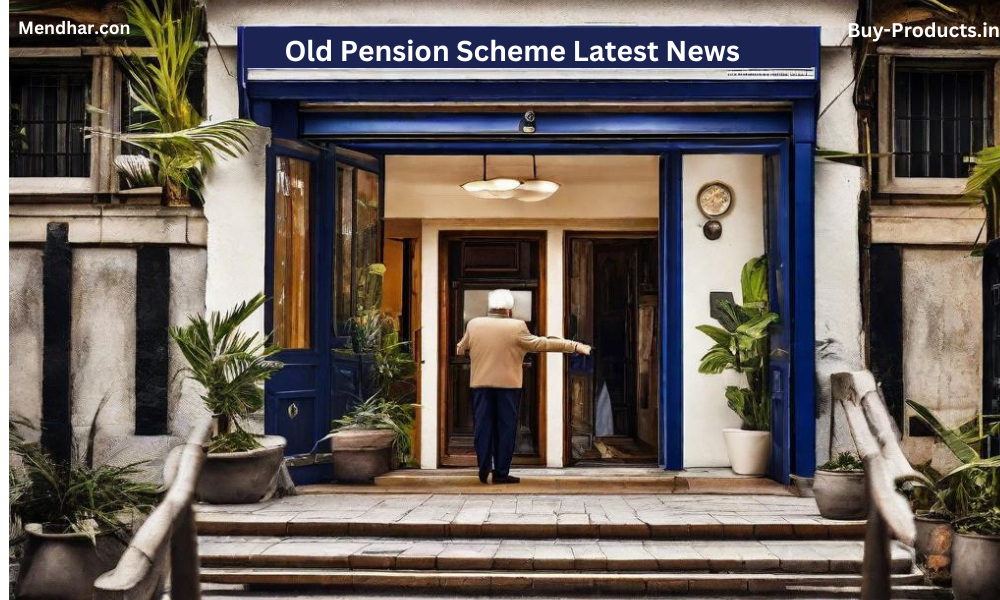Old Pension Scheme Latest News: Stay Updated on Your Retirement Benefits

In a world of ever-changing fiscal geographies and withdrawal plans, staying informed about the old pension scheme rearmost news is pivotal for anyone enrolled in or considering this withdrawal benefit. Whether you’re a government hand or part of the private sector, understanding the recent updates and developments regarding the old pension scheme is essential for securing your fiscal future.
The Old Pension Scheme has been restored in five countries Rajasthan, Chhattisgarh, Jharkhand, Punjab, and Himachal Pradesh. This is in malignancy of considerable opposition from proponents of the National Pension System. Karnataka is presently using a analogous strategy, and Telangana is anticipated to follow suit shortly, keeping its electoral pledge
Given the success of the workers in attaining their demands in these countries despite the central government’s rejection, the OPS appears fated to revitalize across countries and conceivably indeed at the civil position for the incoming government following the 2024 choices. But the Center keeps putting up new obstacles. For illustration, the state minister for finance, Pankaj Choudhary, stated in response to a recent administrative question that the PFRDA 2013 and other applicable regulations don’t allow for the return of the benefactions to the state governments. This implies that the state governments that have decided for OPS will find it delicate to recoup their finances from the pension fund.

old pension scheme rearmost news With effect from January 1, 2004, the Indian government replaced OPS with the New Pension Scheme( NPS). While the NPS needed workers to contribute 10 of their introductory and Dearness Allowance( DA) to the pension fund and a matching donation( increased to 14 since 2019) from the employer, the OPS handed workers with a pension equal to roughly half of their last drawn payment without taking them to make any benefactions to any pension finances. The workers admit gains on their investments in addition to 60 of their total savings when they retire. The remaining forty percent must be invested in life insurance enterprises ’ appropriations. thus, the NPS is easily bad for the interests of government workers and significantly lower effective than the OPS. All countries, with the exception of West Bengal, have commanded this to their pool in addition to the civil government
Tamil Nadu has espoused the NPS, although it has n’t really put it into practice. Naturally, workers in India are opposed to the NPS. A many countries have returned to the OPS as a result of their increased agitation. For illustration, if the OPS is denied to the road workers, they’ve hovered to go on strike starting on May 1. The primary defense for rejecting the workers ’ offer is the growing fiscal strain that government pensions which are granted to workers who make up a pitiful 4 of the labor force civil — are placing on the bankroll. According to a recent RBI Bulletin composition( September 2023) “ the fresh burden reaching0.9 of GDP annually by 2060, with the accretive financial burden in the case of OPS could be as high as4.5 times that of NPS. ” Owing to the unfunded pay- as- you- go nature of the OPS and the yearly payments needed to maintain it, the short- term drop in outgo performing from its elimination isn’t comforting. rather, the long- term burden associated with its reintroduction will be unsupportably large. In a weal state, the government should see longer life spans as a positive development and increase support consequently, rather than viewing them as a burden. Opponents frequently attribute the burden to increased life. still, economists like Prabhat Patnaik question this sense, pointing out that as the frugality grows, paying pensions under the Old Pension Scheme shouldn’t be considered a burden.
likewise, they argue that pensions should be acclimated for affectation to maintain their real value over time. In a weal state, the government should strive to be an exemplary employer by furnishing decent pensions to its workers, setting a standard for the private sector to follow. The thing should be to introduce the Old Pension Scheme in the government sector and work towards a analogous scheme in the private sector, rather than reducing being benefits anywhere.
Frequently Asked Questions (FAQ)
1. What is the Old Pension Scheme (OPS)?
The Old Pension Scheme( OPS) is a pension system that provides retirees with roughly half of their last drawn payment without taking any donation from the workers towards a pension fund
2. What is the New Pension Scheme (NPS)?
The New Pension Scheme( NPS) is a pension system introduced by the Government of India, which authorizations workers to contribute 10 of their introductory payment and Dearness Allowance to the pension fund. Employers also contribute a matching quantum( enhanced to 14 since 2019)
3. Why is there opposition to the New Pension Scheme (NPS)?
Opponents argue that the NPS is inferior to the OPS and not in the stylish interest of government workers. They believe that the OPS provides better withdrawal benefits without taking benefactions from workers.
4. Which states have reintroduced the Old Pension Scheme (OPS)?
States such as Rajasthan, Chhattisgarh, Jharkhand, Punjab, and Himachal Pradesh have reintroduced the Old Pension Scheme. Karnataka is in the process of doing so, and Telangana is likely to follow suit soon.
5. What are the main arguments against meeting employees’ demands for the OPS?
One main argument is the financial strain on the government due to pensions for government employees, who make up less than 4% of the total workforce. Additionally, there are concerns about the long-term financial burden of the OPS compared to the NPS



informative
Gud Faiz sir you are such a great personality who always help us.
God bless you
Pingback: 4% Hike In DA For Central Government Employees -
Pingback: The Structure of NEP 2020 -
Informative sessionn
Pingback: Why Government Employees Oppose NPS? -